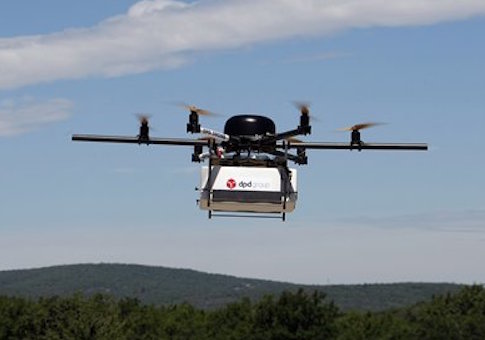The Federal Aviation Administration’s regulation of commercial drones will likely prevent the United States from taking a bigger slice of what could be a $14 billion drone industry, according to a new report.
The Congressional Research Service on Wednesday released an analysis of the expanding commercial drone industry, one that domestically has been held back by FAA regulation.
Currently, the FAA generally prohibits the use of drones, also known as unmanned aircraft systems, for commercial purposes except in cases where exemptions have been awarded for specific activities, such as for firms conducting agricultural, real estate, film, and construction activities.
While the FAA in February proposed a rule that would allow the commercial operation of drones under the weight limit of 55 pounds to fly under specific circumstances during the day as long as other standards are met, the final rule will likely not be issued until late 2016 or 2017.
The FAA is currently testing drones in six locations across the nation to determine how the aircraft could be integrated into the U.S. airspace system.
To date, drones have largely been used in military operations. Individuals are also permitted to fly drones as a hobby as long as they remain under 400 feet and in areas not around airports. Unfortunately, hobbyists do not always abide by such regulations, and there have been multiple near-collisions between drones and airplanes in the U.S. as well as other countries.
According to an estimate from Teal Group Corp noted in the Congressional Research Service report, the worldwide drone industry could grow from $4 billion to $14 billion annually over the next decade.
"However, the lack of a regulatory framework, which has delayed commercial deployment, may slow development of a domestic UAS manufacturing industry," the report reads.
While approximately 89 companies in the U.S. currently manufacture drones, only a fraction—3.8 percent, according to IBISWorld—of the industry comes from civil and commercial production. The largest manufacturer of commercial drones is a company based in Shenzhen, China, and the second is based in France.
Potential roadblocks to the commercial drone industry, the report notes, largely have to do with the FAA regulation--or lack there of—regarding commercial drones.
"Three regulatory issues and a technology challenge are likely to affect the growth of a domestic UAS industry: FAA drone testing plans; final FAA regulations governing the industry; privacy concerns; and improvements in sense-and-avoid and airspace management technologies," the report reads.
The specified technological challenge to the expanding drone industry has to do with the "see-and-avoid" restriction included in the FAA’s proposed February rule that would require a drone’s operator to keep a line of sight with it in order to prevent the aircraft from crashing into buildings, airplanes, and people. It would, as such, limit the distance over which a commercial drone could operate.
"As part of the overall integration of UAS into the national airspace, it will be necessary to establish the technology and infrastructure for a UAS traffic management system for low-altitude airspace," the report concludes.
According to the IBISWorld estimate, the U.S. will generate $3.3 billion in total drone sales this year, the bulk of which come from military drones.
